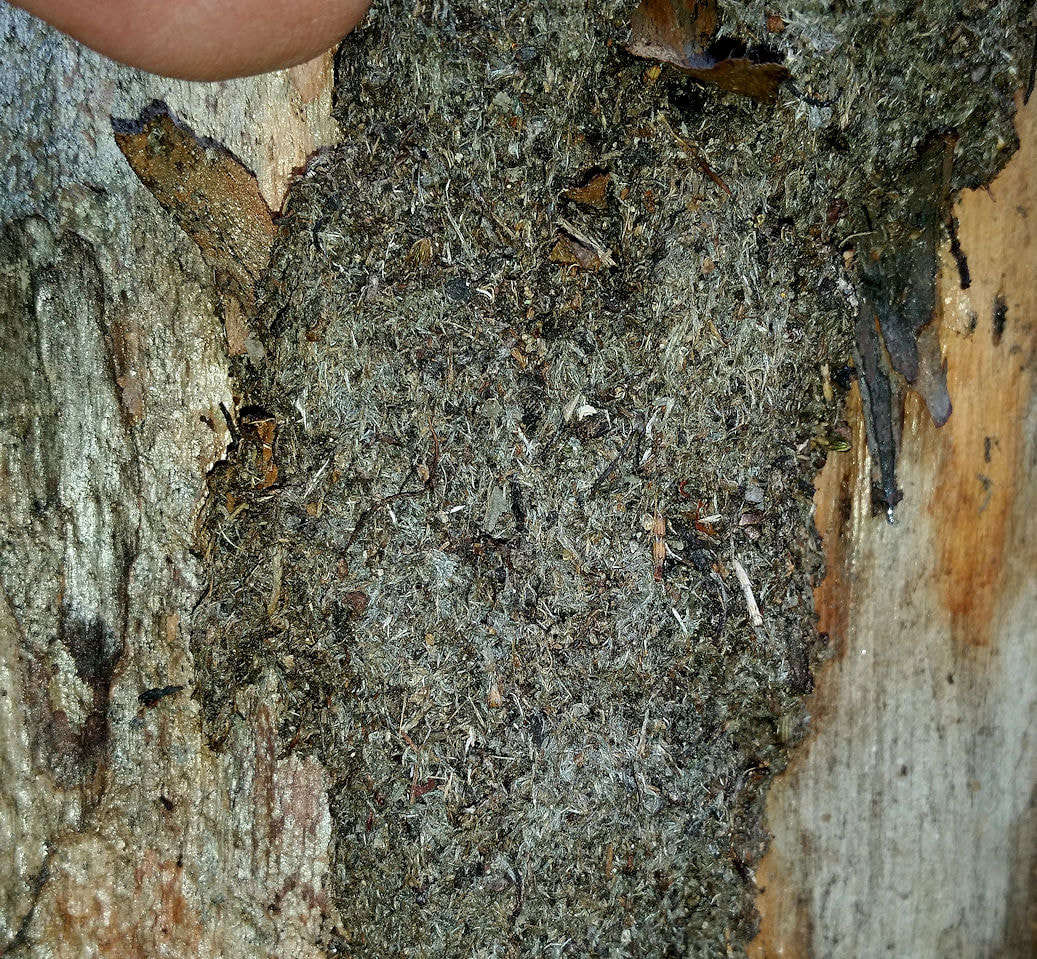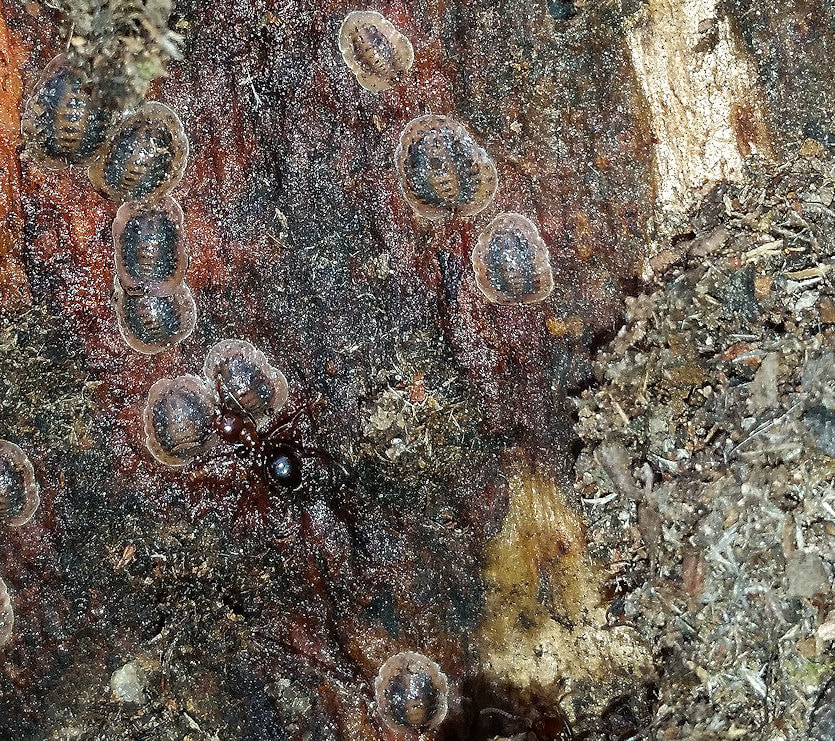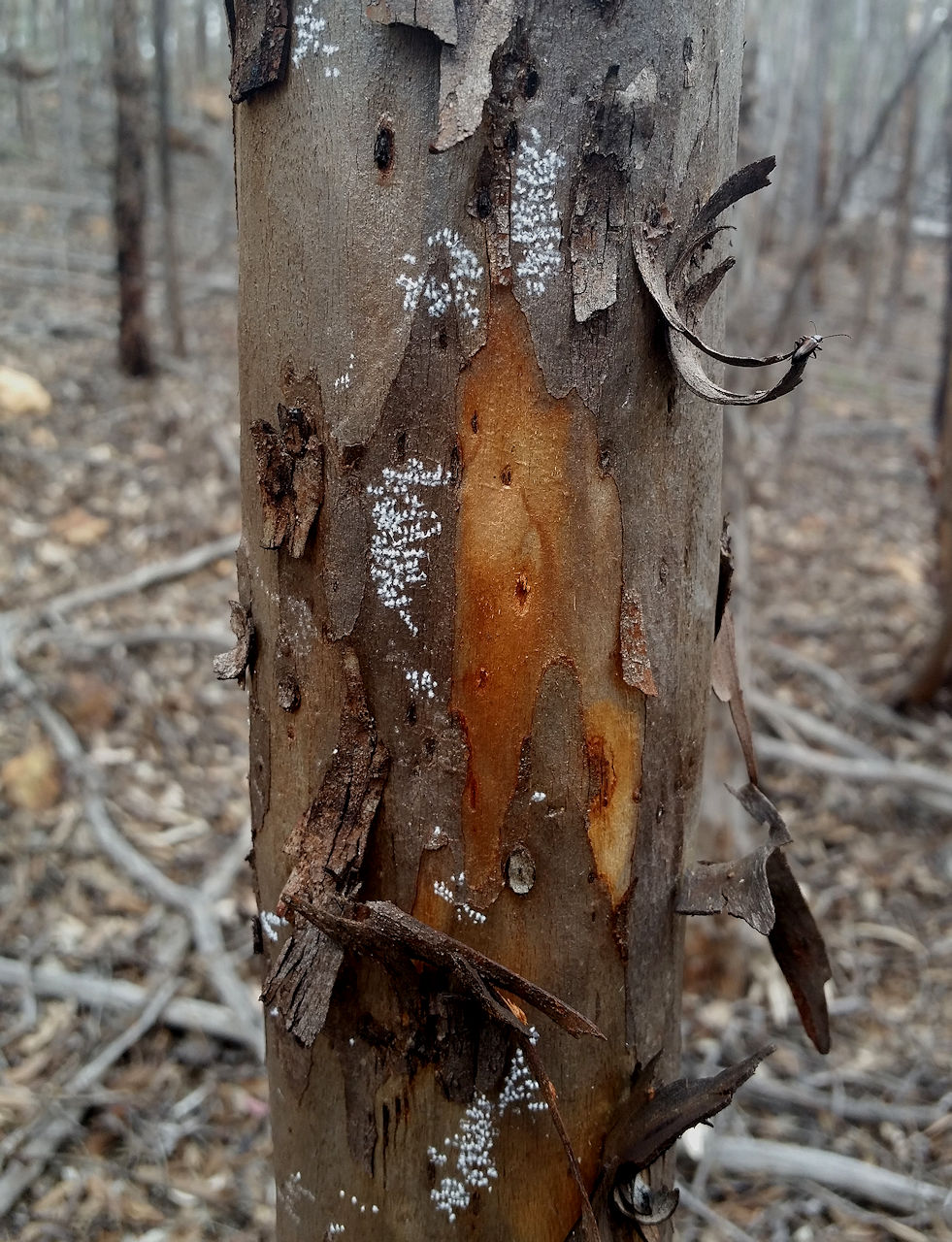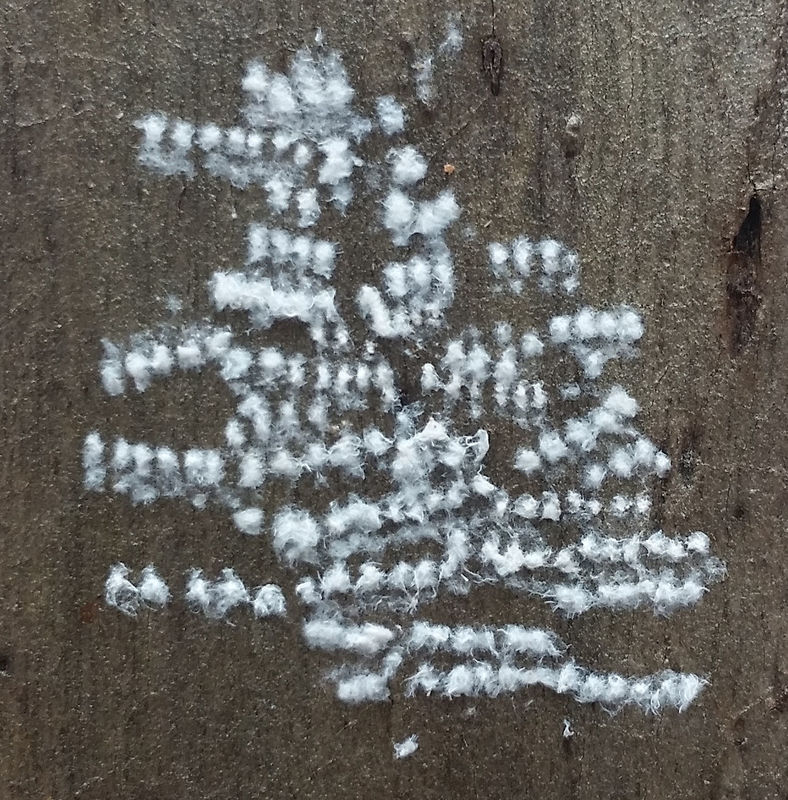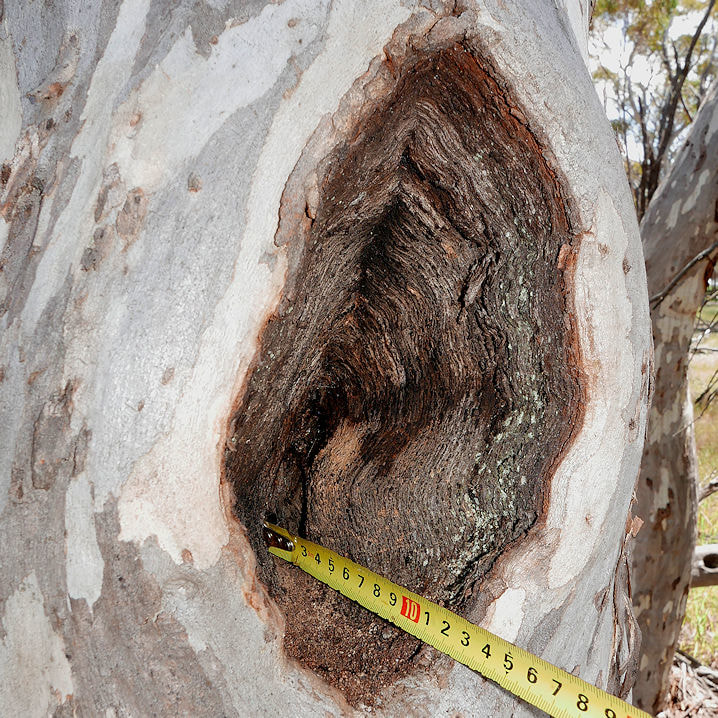Over the years I have reported on sucking insects such as lerps, psyllids, scale and mealybugs, many of which have formed an alliance with ants by secreting a sugary liquid that attracts them to keep predators away.
Recently I found a more active association on a brown mallet at Newman Block. I noticed what looked like a termite gallery creeping up the smooth mallet trunk and was intrigued that termites would attack intact sapwood. When I scratched open the gallery wall, I noticed that it was more like cardboard than clay and that ants rather than termites poured out. This was reinforced by ants running up my leg from their nest in a rotting branch at the base of the tree that I happened to be standing on.
Undaunted by this setback, I investigated further and noticed scale insects feeding on the bark under the cover.
I returned to the spot another three times to collect more samples to take photographs and samples to show to various experts I had approached. Each time the damage had been repaired, and ants poured out again (sorry ants but science must progress). The last time I noticed that the repaired section consisted of grass seeds that were germinating in the humid conditions.
An answer to my queries come via the WAISS (Western Australian Insect Study Society).
Here is a copy of a reply from Dr Brian Heterick at the Western Australian Museum)
“The ant is in the genus Papyrius (Subfamily Dolichoderinae, the same family to which the meat ants belong). The species is not clear from the photograph, but the group needs revision; there are several named species.
Papyrius ants are known to tend butterfly larvae that produce sweet secretions, so their also tending scale insects that produce honeydew is no surprise. This genus of ants is also associated with trees, and their nests constructed of frass and plant fibres are readily identifiable. They also nest in soil, often around tree trunks.
When at Curtin I received occasional reports of these ants nesting in ceiling spaces and frass falling down from the ceiling on to carpet, so they can be a (very minor) nuisance, especially in country areas.
The scale insect looks as though it may be in the Family Coccidae (soft scales).”
So there you are, by providing a secure and moist ‘house’, the ant colony gets a free honeydew supply.
To see more images click here
“Larvae of particular moth species begin life as parasites of homopterans (the sub-order Homoptera includes aphids, cicadas and leafhoppers).
Once the larva reaches a certain stage of growth, it leaves its homopteran hosts and awaits an encounter with a meat ant, Iridomyrmex purpureus. Upon discovery, the meat ant picks up the larva and takes it into the ant nest.
The larva spends the rest of its development in the galleries of the ant nest. For food, the moth larva eats the ant larvae, yet the adult ants don’t seem to object.
As if in payment for their safe lodgings and all-you-can-eat buffet, the caterpillars produce a liquid from their rear ends that the adult ants find irresistible. The unfortunate ant, blinded by his partiality for liquor, overlooks the fact that it is produced entirely at the expense of his (her) own larvae devoured.
So these dreaded ant swarms that destroy picnics and climb into you undies also get their come-uppance.
For those wishing to join or know more about WAISS click here.
